June 2022
Honoring Yesterday – Protecting Tomorrow
Vol. 53, No. 6
June Calendar of Events
9—(Thurs.) RESDC Board of Directors Meeting
Via Zoom Web Conferencing 9:30 a.m.
16—(Thurs.) SDCERA Board of Retirement Meeting
9:00 a.m.
30—(Thurs.) Flag Day / Independence Day Luncheon
Ronald Reagan Community Center,
195 E Douglas Ave., El Cajon, 92020, 11:00 a.m.
View THE NETWORK
as a printable PDF
Are you on social media?
Stay connected with us!![]()
![]()
QUOTE OF THE MONTH
You have to learn to interrupt because you aren’t going to get called on.
▪ Madeline Albright
FLAG DAY / INDEPENDENCE DAY LUNCHEON
Thursday, June 30, 11:00 am
Ronald Reagan Community Center
We are pleased to invite you to our joint celebration of two historic days in American history. In addition to our commemoration of the adoption of the flag of the United States, we will also be recognizing the day in which 13 colonies claimed their independence from England, an event which eventually led to the formation of the United States.
We’ll enjoy a buffet style lunch at approximately 12:00 pm, with ham, roast turkey, rosemary potatoes, green beans almandine, fresh fruit, salads, desserts, and beverages. This is an indoor event with ample free parking on both sides of the center.
When: Thursday, June 30, 2022, 11:00 am
Where: Ronald Reagan Community Center, 195 E Douglas Ave, El Cajon, CA 92020
Cost: $14 per person
Registration: Registration forms and payment must be received in the RESDC office by Friday, June 24. Name badges and opportunity drawing tickets should be picked up at the check-in table at the luncheon. They will not be mailed.
Register by Mail: Fill out the registration form by clicking here, make a check payable to RESDC for $14 per person and mail both to RESDC, 8825 Aero Dr., Suite 205, San Diego, CA 92123.
Register Online: Go to www.resdc.net/events, click on the green “Register” button, and follow the steps. You will need to use the email associated with your member account. Click “Add guest” to add additional registrants for $14 each. To pay for yourself and guests, click “Pay Online” and pay with credit card.
Register by Phone: Call the RESDC Office at (619) 688-9229 during our hours of 9 am – 2 pm Mon-Fri.
Directions to Ronald Reagan Community Center: Located one block south of E. Main Street, El Cajon, directly off Magnolia Ave. Take I-8 to Magnolia off-ramp, go south to E. Douglas and turn left.
For questions or assistance registering, contact us at (619) 688-9229 or resdc@resdc.net. □
PRESIDENT’S MESSAGE
By Chris Heiserman
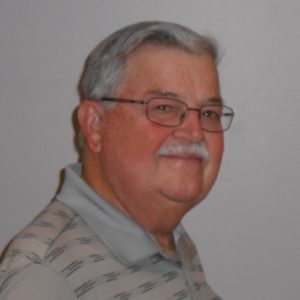 My wife, Sonya, and I returned to the United States on May 1st after a two-week vacation to northern Spain and northern Portugal. We were on a tour that included the Basque region in Spain, and we followed the famous Camino de Santiago (the Way of St. James) for about 90% of our journey (by bus, except for a couple of 2-plus mile hikes on an actual path traveled by ancient “pilgrims.”) The Camino is a large network pilgrimage routes stretching across Europe and culminating at the alleged tomb of St James in the Cathedral in Santiago de Compostela in northwest Spain.
My wife, Sonya, and I returned to the United States on May 1st after a two-week vacation to northern Spain and northern Portugal. We were on a tour that included the Basque region in Spain, and we followed the famous Camino de Santiago (the Way of St. James) for about 90% of our journey (by bus, except for a couple of 2-plus mile hikes on an actual path traveled by ancient “pilgrims.”) The Camino is a large network pilgrimage routes stretching across Europe and culminating at the alleged tomb of St James in the Cathedral in Santiago de Compostela in northwest Spain.
We planned this trip about mid-way through the pandemic trying to gauge when it would be safe to travel abroad again. We had trepidations about health conditions globally as the time for the tour drew closer – then Russia invaded Ukraine! As we watched the horrifying news every day of the tragic loss of civilians’ lives, the displacement of millions of Ukrainians and the growing refugee crisis in Eastern Europe, our minds were flooded with emotions and doubts. Should we be going on a special vacation while the world was struggling with the potential for an even wider conflict?
We finally decided that while people all around the world were praying for peace and were saddened and depressed over the plight of beleaguered Ukrainians, post pandemic life was resurfacing. People were going out in public again, traveling to see family and friends they had cautiously avoided during the pall of Covid-19 and its variants. Our friends encouraged us to go and we were glad we did. It was a welcome break from the depressing routine of awful “breaking” news and an eye-opening experience of unique European cultures and history.
We traveled with a small group of Americans with diverse backgrounds from throughout the country. We found common denominators in how each of us had coped with pandemic issues the past two years and we all felt privileged to be able to travel abroad again. We also found that even though the typical American attitude might be “we are special”, European countries are often far more enlightened than we are in many ways.
Large cities as well as small towns and villages in Spain and Portugal were far cleaner than ours. They are better at recycling, and they are far ahead of us generally in providing and utilizing public transit (buses, trams, metros and trains). Perhaps population density had something to do with that, but also maybe at least 100 years of pragmatic historical practice in contrast to the American fascination with the automobile.
The local people we interacted with were friendly and welcoming. Merchants and hotels were delighted to see tourism returning. Pandemic mask requirements were still in force in both countries indoors and on public transportation, which included our daily excursions by tour bus and many visits to restaurants where the masks came off only while eating meals. It became second nature to don the masks, and cope with fogged-up glasses.
I posted periodic Facebook photos and descriptions of our travels and a few dozen “friends” followed along and expressed appreciation for the opportunity to enjoy our adventures vicariously. The trip was exciting, educational, and unforgettable. Sadly, the status of international turmoil and humanitarian calamity in eastern Europe did not improve while we were away. □
RESDC BOARD OF DIRECTORS CANDIDATE NOMINATIONS ARE OPEN
By Bruce Silva, Elections Committee Chair
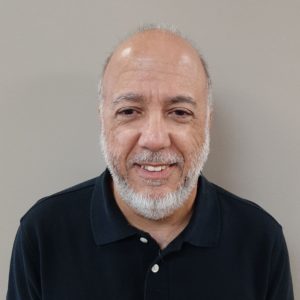 The terms of four (4) Directors, as well as Secretary and Treasurer will end on 12/31/2022. Accordingly, we are accepting applications, as well as nominations based on established qualifications for the new term, which runs 1/1/2023 through 12/31/2024.
The terms of four (4) Directors, as well as Secretary and Treasurer will end on 12/31/2022. Accordingly, we are accepting applications, as well as nominations based on established qualifications for the new term, which runs 1/1/2023 through 12/31/2024.
Changes that impact San Diego County retirees require active participation by County retirees. RESDC encourages all members to contribute their talents for the benefit of the entire membership, so that our organization continues strong and productive.
We need prospective candidates who are able to volunteer time and effort to promote RESDC’s goals, attend monthly board meetings, and be present at six general membership meetings each year. One term as director is usually enough motivation to escalate your participation in the Board of Directors and could lead to a position as an Officer.
Active employees, registered as Associate Members, are eligible to run in the election. According to RESDC Bylaws, participation is restricted to the election of one Associate Member to an open position of Director (Associate Members are not eligible to run for Officer seats).
Interested RESDC members must file a candidacy statement (200 words or less), with a summary of your background and work experience to: RESDC, 8825 Aero Drive, Suite 205, San Diego, CA 92123, or by email to resdc@resdc.net, by Monday, August 1, 2022. (NOTE: State the candidacy you are qualified for. Only current and past board members are eligible to run for Secretary and Treasurer.)
If you have any questions, please contact our office by phone at (619) 688-9229 or by email at: resdc@resdc.net. □
RECENT EVENTS
Jaw-Dropping Stats About the State of Retirement in America. A recent article at Yahoo Finance documents statistics related to the struggles many Americans have saving for retirement.
The average age of retirement for Americans is 66, according to a Gallup poll, which is up from age 60 in the 1990s. With Americans living an average of 78.7 years, that’s a good 12 or more years of time to enjoy life after work, at a hopefully slower pace. Here are some additional stats about the concerning state of retirement security for millions of Americans:
- Of the 47.8 million Americans ages 65 and older, the average income is only $38,515 dollars, according to the U.S. Census, and their average net worth is $170,516.
- According to a Gallup poll study, when 18- to 29-year-olds were interviewed about retirement, younger people expressed optimism that they’ll be able to retire early, closer to their early 60s. However, once they hit 30, that optimism wanes, perhaps due to the realities of making a living catching up with them.
- Average life expectancy is not a good way to plan for how much money you’ll need in retirement; many Americans live much longer than the average of 78.7 years, going well into their 80s or 90s. According to the Social Security Administration, a healthy 65-year-old woman has a very good chance of living to age 86, and a 65-year-old man has a good chance of reaching age 84. Older adults should save for a retirement that could last 20 years.
New Research: Creating A Retiree Medical Trust: A Fresh Look at a Proven Solution. The National Conference on Public Employee Retirement Systems (NCPERS) recently released research which provides background on the history of retiree healthcare for public employees. The research also shows how employers and employees can use pre-tax dollars to fund their retiree medical expenses.
Retiree medical trusts (RMTs) have already proved attractive to many public sector employers and unions as a way to provide meaningful help to retirees. RMTs serve as a tax-favored method to help employers and employees earmark savings for eventual healthcare needs. Like pensions, RMTs harness the power of collective investing to provide income in retirement—in this case, for the specific purpose of defraying medical expenses.
To access the research and learn more, visit: https://www.ncpers.org/ . □
CROSSING THE COVID RUBICON?
By Stan Coombs, Immediate Past President
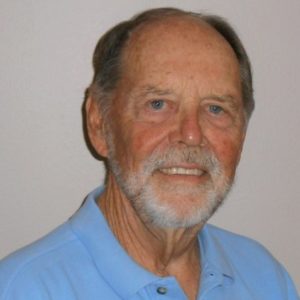 RESDC’s “THE NETWORK” has covered enough of COVID’s antics in recent years to satisfy even the most paranoid observer, one would think, at least for those interested enough to review multiple pages of past editions. But there’s a new benchmark that’s hard to ignore. It showed up in a typically brief April 27th AXIOS news report written by regular contributor Mike Allen.
RESDC’s “THE NETWORK” has covered enough of COVID’s antics in recent years to satisfy even the most paranoid observer, one would think, at least for those interested enough to review multiple pages of past editions. But there’s a new benchmark that’s hard to ignore. It showed up in a typically brief April 27th AXIOS news report written by regular contributor Mike Allen.
“Blood tests show a majority of Americans (roughly 190 million people) have been infected with COVID, according to CDC data released yesterday,” begins Allen. And then adds that the total number reported to be infected includes 3 in 4 children tested, and calls this “the overall U.S. seroprevalence,” paraphrasing the Oxford Language Dictionary’s definition of “the level of a disease in a population.” Remember the term, we’ll see it again.
So. . . most of us have caught the bug by now! “COVID-19.” Who would have expected that back in March 2020, when some health agencies first recognized enough danger to start restrictions and closures? We were counting victims only by the dozens at that point, and thought we were guarding against a mild risk for only a few weeks. But this CDC report is from the December 2021 through February 2022 period, when the Omicron variant was just starting its vengeful rampage. COVID-19 case rates ultimately peaked with the Omicron, we’re reminded.
But a broader picture of the COVID damage we’ve sustained can be seen in Allen’s piece, taken together with an April 26, 2022 U.S. Centers for Disease Control and Prevention (CDC) Report entitled “Seroprevalence of Infection and Induced SARS-CoV-2 Antibodies.” Both advised when U.S. cases exceeded 81 million and nearly a million deaths, and the CDC, which also tracks the global count, says those recently passed 11.3 million cases and 6.2 million deaths worldwide.”
More detail. The CDC report continues, explaining that it uses data from something called the agency’s national commercial laboratory study (described in lower case), to examine infection trends during the aforementioned period, by age groups taking regular blood samples from within the 50 U.S. states, the District of Columbia and Puerto Rico, to find infection-induced antibodies to SARS-Cov-2, as convenience allows. Apparently, the particular antibodies sought aren’t induced by vaccines, only by COVID infections.
During the December 2021 through February 2022 period in question, samplings of blood specimens were collected and analyzed for the antibodies, averaging we’re told, 73,869 samples each four-week period.
The pertinent findings of the study are announced in both reports, including that positive seroprevalence (positive findings of the antibodies sought) overall increased from 36% to 58% over the 90-day tested period, enabling Allen to make fair use of his lead statement about the majority of Americans now having been COVID-infected at some point. In still more detail, seroprevalence is reported to have increased 44% to 75% for children zero to 11 years during the period; 46% to 74% for children 12 to 17 years; 37% to 64% for adults 18 to 49 years; 29% to 50% for adults 50 to 64 years; and, 19% to 33% for those older than 65.
The CDC report ends with warnings. The most important, probably, that these findings may underestimate the cumulative total of infections, “because infections occurring after vaccinations may result in lower anti-N titers, causing less immune reactions, and anti-N seroprevalence cannot account for reinfections.”
So the picture could be worse than first appearances lead readers to conclude. And the authors emphasize their warnings by noting the high overall infection rates for Omicron, especially for children and groups with the lowest vaccination coverage and stating that staying up-to-date with vaccinations is the safest strategy for preventing SARS-CoV-2 infection, severe disease and hospitalization.
As this is written, Smart News, another cell phone news service, advises that 66.2% of the U.S. population is now fully vaccinated.
What’s the old saying? . . .that a certain kind of news always comes in certain multiples? □
SDCERA NEWS
ONLINE EARNINGS STATEMENTS AVAILABLE IN SDCERA’S MEMBER PORTAL
You can access your SDCERA earnings statement anytime, anywhere through the Member Portal. You’ll see your online statement days before receiving the printed one. Sign up or log in now at: memberportal.sdcera.org. □
SPRING 2022 CRCEA CONFERENCE
[Editor’s note for background: Our retirement system, The San Diego County Employees Retirement System (SDCERA), is one of 20 retirement systems in California governed by the County Employees Retirement Law of 1937 (CERL). There are retiree associations similar to RESDC in each of the other 19 counties. Together, these retiree associations are members of a statewide organization known as the California Retired County Employees Association (CRCEA).]
Historically, CRCEA has had two in-person conferences each year, one in Northern California and one in Southern California. That is, until wildfires and COVID-19 threw in a monkey wrench. These conferences have served as an opportunity for the delegates from RESDC and the other counties to get updated on retirement-related information and to share about their activities so the attendees could take back information to their associations that might help strengthen and enhance their organizations. Because of concern about COVID-19, the host for the Spring 2022 conference, The Retired Employees of Orange County (REAOC), planned a first-ever “virtual” conference for May 2nd and 3rd.
RESDC was well represented at the virtual conference. John McTighe was our designated delegate in the absence of President Chris Heiserman who was traveling with his wife. In addition, Executive Director Mark Nanzer, First Vice President Delores Diaz, Second Vice President Janel Pehau, and Board Members Chuck Brown and Francine Howell attended some or all of the sessions.
The conference consisted of the usual mix of specific retirement-related information and personal interest/growth sessions. REAOC co-presidents Doug Storm and Linda Robinson and their Executive Director Ilene Barcenas did a great job in organizing the conference, with the help of technology consultants Mediaworks. The conference started off with CRCEA President E.F. (Skip) Murphy (yes, San Diego’s very own Skip Murphy), calling the conference to order and welcoming the attendees. After a video presentation of the colors, the reciting of the Pledge of Allegiance and the singing of the National Anthem, a very moving video tribute to the late George Shoemaker was played. George, who you may recall was a long-time member and former president of RESDC, had been a stalwart of CRCEA and was the chair of CRECA’s Retirement Security Committee from its inception in 2011 until his recent passing.
The first presentation was timely and very relevant to the business of retirement associations. Hank Kim, the Executive Director and Counsel of the National Conference on Public Employee Retirement Systems (NCPERS), gave a National Update of the Trends of Public Plans and Washington, DC. Kim shared information about the scope of retirement plans, comparing private sector plans, state/local plans and federal plans taken from the Federal Reserve’s, Financial Accounts of the United States published this past December. The table below shows how truly significant state and local retirement systems are in the financial picture.
Private Sector Plans
|
State/Local Plans
|
Federal Plans
|
Kim, whose organization is the primary advocacy organization for public defined benefit plans, concluded by sharing results of the last annual survey NCPERS did of its member retirement systems saying:
- Funds continue to tighten assumptions
- The trends of public funds becoming more cost-effective continues
- Responding (to the survey) funds have funded levels that are sustainable
- Income used to fund pensions come from three sources: investment returns 68%, employer contributions 23%, and member contributions 8%.
Other sessions included a very moving and inspirational talk by motivational speaker and entertainer Tom Sullivan who, in spite of being blind since birth, has gone on to live a full and successful life. Some may remember Tom from his 65 appearances on the Johnny Carson Show back in the day.
The conference also included presentations from a couple of people associated with the University of California, Irvine (UCI). One was a professor and cognitive neuroscientist and researcher in the field of sleep, Dr. Sara Mednick. She presented findings from her research concerning the effects of sleep on the brain and productivity. She emphasized the importance of sleep’s recharging of our own restorative systems. The other presenter from UCI was Yoga instructor and therapist Amy Harper who shared several techniques for dealing with anxiety using yoga and meditation.
Another presenter was Neil Sahota, an expert in artificial intelligence who described how artificial intelligence is progressing and will be leading to greater innovation in the future.
Attendees heard an interesting dialogue between Kelly McKale and Kent Chan of Capital Group addressing short term losses in a volatile global market. Some of the conclusions from this are that consumption in the U.S. is still very strong and that in spite of historic inflation, there has still not been much resistance to price increases. There was discussion about China’s role in the global market and concerns about both the effect of how China is managing COVID and how China might be complicit with Russia’s war in Ukraine. Finally, it was noted that the world economic order is changing, with the U.S., NATO and their allies lined up against China, and an observation that strong charismatic leaders are coming to power in a number of countries around the world.
As is the normal flow of these conferences, it concluded with the CRCEA business meeting. The business meeting is attended by the official delegate from each of the 20 member associations. This is the time when the business of CRCEA is conducted and when associations have an opportunity to share information they want others to be aware of. It’s also the time when the chairs of the nine CRCEA committees report to the full membership. At this session, President Skip Murphy appointed John McTighe to take over chairmanship of the Retirement Security Committee which had become vacant with the passing of George Shoemaker.
Upon recommendation of the delegate from the Santa Barbara County retiree association, it was decided that before the next scheduled conference in October in Sacramento, the Executive Committee will evaluate how to conduct conferences in the future. Among the suggestions was that there be only one 2-day in-person conference per year and one 1-day (or less) virtual business meeting per year.
All in all, the consensus of those in attendance at the business meeting was that this first ever CRCEA “virtual” conference had gone well and everyone thanked the people from REAOC for all of their work to make it a success. □
BITS AND PIECES
Editor’s Note: We would like to continue printing some Bits and Pieces items in this newsletter about our members.
If you have taken an interesting trip or have had an intriguing event happen recently, please let us know so that we can share your story with our members.
If you have reached an exciting birthday, or wedding anniversary, please call Karen Hazel, RESDC Editor, at (866) 688-9229. You can also write to Karen at RESDC, 8825 Aero Drive, Suite 205, San Diego, CA 92123. You can also send your information to us by email at: resdc@resdc.net . □
BOARD MEMBER PROFILE DOLORES DIAZ
FIRST VICE PRESIDENT
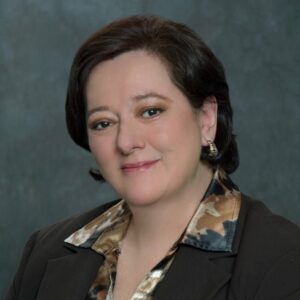 Dolores Diaz retired from the County of San Diego’s Department of Housing and Community Development in 2012 with 20 years of County service. She has been an affordable housing professional for over four decades. Upon leaving the County, she became the Executive Director for the Regional Task Force on Homelessness, and successfully led that organization for over five years.
Dolores Diaz retired from the County of San Diego’s Department of Housing and Community Development in 2012 with 20 years of County service. She has been an affordable housing professional for over four decades. Upon leaving the County, she became the Executive Director for the Regional Task Force on Homelessness, and successfully led that organization for over five years.
She is currently on her second career with the San Diego Housing Commission and continues to enjoy working in the affordable housing industry.
Dolores has been married to her husband, Jose, for 40 years. They live in Chula Vista and they have three children and two grandchildren. Dolores is active in her church and enjoys volunteering her time in the community. She is honored to serve her retired County family. □
WECOME NEW MEMBERS
Irma Pena, Library
Laura Coyne, Sheriff
Charles Daudert, Public Works
Fe Martinka, Assessor Recorder Co Clerk
Robert Townsend, Sheriff
The Surviving Spouse of a RESDC member is eligible for RESDC membership. For enrollment assistance, please call (619) 688-9229. □
IN MEMORIAM
Edward Aycox, Health & Human Services
Janis Bellinger, Health & Human Services
Joyce Billing
Forentino Blanco, Treasurer Tax Collector
Millard Campbell, Environmental Health
Patricia Chapps, Municipal Court San Diego
Larry Cook Civil, Service Commission
Thomas Decker
Rafael Delira*, Sheriff
Robert Denny
Mardelle Ebell
Joseph Gaskill
Usama Georges*, District Attorney
Marie Harris
Frances Hinkle
Corrine Huhn, Surviving Spouse
Daniel Hyatt, District Attorney
Don James, Health & Human Services
Janet Jones, District Attorney
Ernest Kawai
Sally Kloman, Health & Human Services
Haydee Larroque, Auditor & Controller
Nancy Londrow, Surviving Spouse
Leroy Martin, Social Services
Gilbert Matheson, Facilities Management
Mary May, Municipal Court El Cajon
Jay McBride
Robert Mitchell, Social Services
My Nguyen, Superior Court
Sandy Owens, Health & Human Services
Patrick Peterson, Sheriff
William Rho-Renshaw*, Health & Human Services
Jacqueline Rixie, Registrar of Voters
Dolores Sacco, Planning & Land Use
Kay Simpson, Social Services
Michael Specht, Probation
Roger Stafford, Sheriff
Jay Terry, Health & Human Services
Virginia Walton, Probation
Norman Watson
Janet Williams, Surviving Spouse
Margaret Wright, Child Support
Margarita Zasueta, Sheriff
*Active Employee
MEMBER PRIVACY
Any retiree or surviving spouse who does not want his/her death notice published in the “In Memoriam” column may notify the RESDC office and your privacy will be maintained.
The Surviving Spouse of a RESDC member is eligible for RESDC membership. For enrollment assistance, please call (619) 688-9229. □
CROSS-COUNTRY CHARITY WALK PAUSED IN NEW MEXICO
Travis Johnson and Nikko Pledge to Continue
By Chris Heiserman, RESDC President
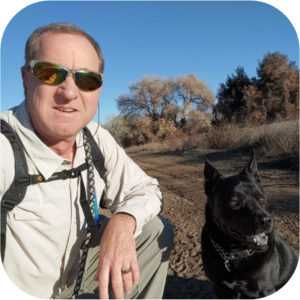 Travis Johnson, AKA “TravOnTheTrail”, had to end his coast-to-coast walking quest to support wounded police officers, teens facing court challenges, and other causes in April. Travis and his dog, Nikko, started their journey at the U.S.-Mexico Border in Imperial Beach in early March. He shared his adventures and many interactions with friendly and helpful local people on social media with frequent blog posts and more than 200 Facebook followers.
Travis Johnson, AKA “TravOnTheTrail”, had to end his coast-to-coast walking quest to support wounded police officers, teens facing court challenges, and other causes in April. Travis and his dog, Nikko, started their journey at the U.S.-Mexico Border in Imperial Beach in early March. He shared his adventures and many interactions with friendly and helpful local people on social media with frequent blog posts and more than 200 Facebook followers.
Travis was forced to call off the trek in Albuquerque, New Mexico after 38 days because of personal health issues, really missing his family and critical medical problems which afflicted close friends and family. He received donations from supporters who mostly wanted him to use the money for himself, but he donated all the funds to the charitable causes he dedicated his walk to. He plans to finish the journey, perhaps in segments or state by state, when he and Nikko can.
Travis was a Law Enforcement Officer for 20 years, ten years with the State of California and ten years as a Deputy Sheriff for San Diego County until he was forced into an early medical retirement after being hit by a drunk driver while working an overtime shift. He was unable to return to full duty, but he has adapted and continues to live a happy, fulfilled, and enjoyable life. He has had a long-time dream of walking across America and wouldn’t let his injuries and constant pain deter him. He has amazing support from his wife and son helping him through it all.
He has been an avid hiker and outdoorsman his whole life, and since Nikko has been in his life, he has joined Travis on most of his treks. Travis is an extraordinary person, bubbling with enthusiasm for getting outside and exploring new trails. He continues to document his hikes online with narrated videos, encouraging everyone to “keep on moving,” and “putting one foot in front of the other.” If you want to tune in to something uplifting and inspirational, check out Travis on Facebook, Instagram, YouTube, Twitter and TikTok at “TravOnTheTrail.”
Two of his major causes are The Wounded Blue which helps injured Law Enforcement Officers, and Kids and Teens in Court, which is a program at the Chadwick Center at Rady’s Children’s Hospital.
I’ve made donations to both from my recent COLA increase.
Join Travis and Nikko and “Keep on moving…” □
THE NETWORK is the official monthly newsletter of the Retired Employees of San Diego County, Inc. (RESDC), a private non-profit organization.
The information printed in THE NETWORK is believed to be from reliable sources. However, no responsibility is assumed by THE NETWORK for inaccuracies contained herein.
Business and Inquiries: Business matters and address changes may be recorded on our voicemail at any time, call (866) 688-9229. Please spell your name so the correct member record can be located.
Retired Employees of San Diego County, Inc.
8825 Aero Drive, Suite 205 | San Diego, CA 92123
Office Hours: 9 a.m. to 2 p.m. Monday through Friday
TELEPHONE: (866) 688-9229 Toll Free
FAX: (619) 688-0766
E-MAIL: resdc@resdc.net

